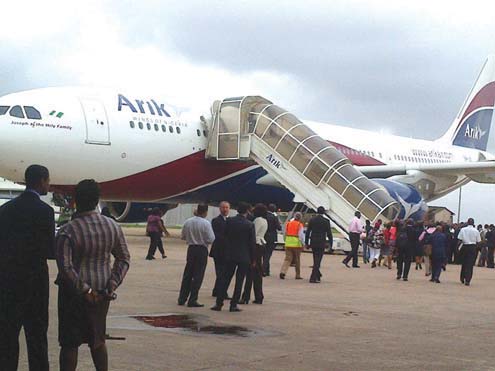20th September, 2013
By Simon Ateba/Aviation correspondent
Africa is the second most populous continent on earth after Asia with more than a billion people, but last year, our big continent accounted for only 3 percent of global aviation traffic and nearly 50 percent of all air fatalities.
Worse, African airlines had one accident (with Western-built planes) for every 270,000 flights. Globally, the industry average was one accident for about every five million flights, according to the International Air Transport Association, IATA.
Even more disheartening, is the fact that while airlines from other continents made about $7.6 billion profits in 2012, the biggest windfall since the 2001 terrorist attacks in America, African airlines lost about $100 million.
Experts say African planes continue to be regarded as flying coffins because they have not complied with recommended international safety audits.
For instance, none of the airlines that crashed in Africa last year had passed IATA Operational Safety Audit, also known as IOSA.
Globally, none of the 384 airlines on the IOSA registry had a jet lull loss – including some three dozens carriers on this continent. There are 25 airlines on the IATA registry in Africa and none of them crashed.
Dana Air, whose plane crashed in Lagos on 3 June, killing more than 150 people, was not and is still not IOSA certified.
But as important as IOSA certification is, only two out of 54 African countries have made it compulsory for their airlines. (Egypt and Madagascar).
In Nigeria, only Arik Air is IOSA certified, the rest; Aero Contractors, Dana Air, IRS, Med-View Airline, Chanchangi Airline and Overland Airways among others are not.
The other recommended safety audit, the International Civil Aviation Organisation (ICAO) Universal Safety Oversight Audit Programme, also known as USOAP, has only been implemented in 11 out of 54 African countries.
Sadly, even those 11 African countries have only achieved 60 percent of ICAO’s Safety Related Standards and Recommended Practices (SARPS).
More than 40 African countries are still below that important benchmark.
With several safety audits so poorly implemented and with some blacklisted Eastern-built planes still being used by some airlines on our continent, the European Union has banned some African airlines from flying into its skies.
Africa has set 31 December 2015 to get all its airlines on the IOSA registry.
But with only two years, three months and 9 days to that deadline, optimism remain very scarce due to the myriad of challenges.
Most African airlines are crippled by a cornucopia of factors.
They lack adequate resources and capital for investment. They are faced with skyrocketing aviation fuel, also known as Jet A1. Africa does not also manufacture planes or spares. There is a lack of ground support equipment and all transactions are made in dollars. There are also very few hangars and all most airline are not efficiently run.
With all these challenges, safety often take the back seat.
The way forward is for African governments to insist that airlines acquire all the safety certifications needed to improve safety on African skies.
It is only when our skies are safe and our airlines are professionally run that African carriers will go from US100 million dollars losses in 2012 to US 100 million dollars profits that IATA has predicted this year.
